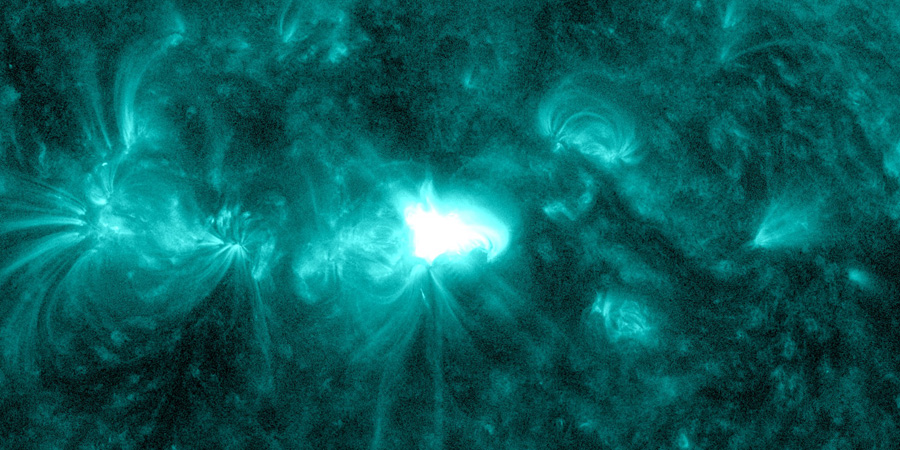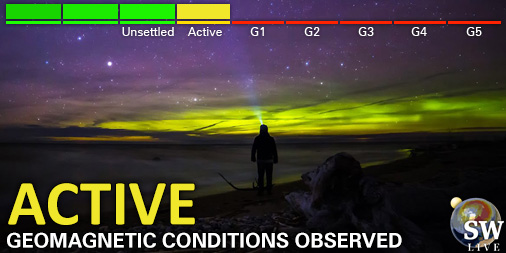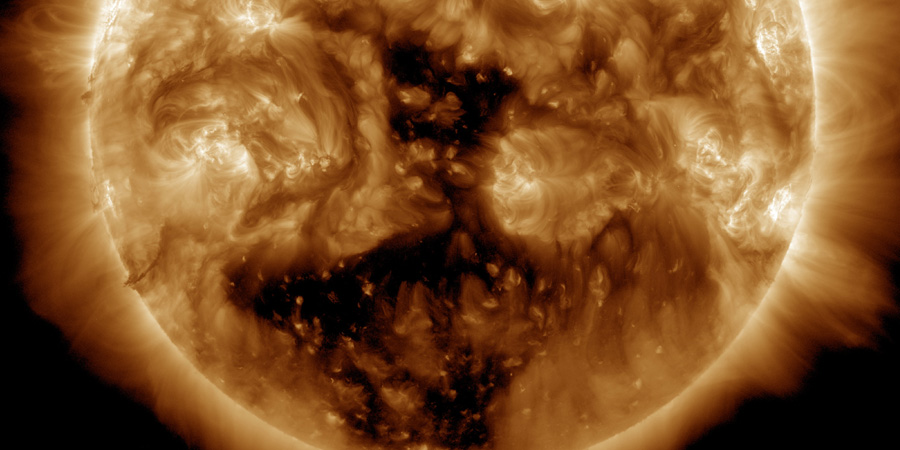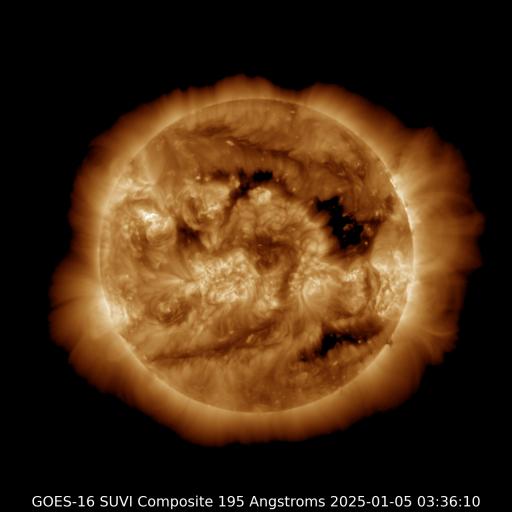M4.0 solar flare from sunspot region 2975
Monday, 28 March 2022 19:26 UTC

Our Sun is suddenly kicking things into a higher gear with numerous sunspots and active regions appearing appearing all over the solar disk. Sunspot regions 2975 and 2978 are by the far the most interesting regions right now and have both been the source of numerous C-class solar flares. Until late this morning that is. Sunspot region 2975 decided enough is enough and gave us a long duration M4.0 solar flare (R1-minor) that peaked at 11:29 UTC. This sunspot region is located right on the center of the earth-facing solar disk, great for an earth-directed coronal mass ejection!
Moments following the eruption we got confirmation of what we expected... both Type II and IV radio sweeps were reported and some nice coronal dimming (see first Tweet) was visible. LASCO imagery has also started to trickle in now and in all honesty, considering the look of the eruption, the resulting coronal mass ejection did disappoint us a little. We do see an asymmetrical full halo coronal mass ejection leaving the Sun but most of the ejecta is heading north-west. The full halo outline does however leave no room for doubt, this cloud of solar plasma has an earth-directed component. There are no official forecasts out yet but our preliminary analyses suggest an impact time early on Thursday, 31 March.
However, sunspot region 2975 remains a very potent threat due its complex magnetic layout. More M-class flare activity does seem likely within the next 24 hours and even an X-class solar flare is not totally out of the realm of possibilities.
Another look at the M4.06 solar flare of today, an Earth directed CME is very likely, but we still await LASCO imagery to analyse the CME distribution.
— SpaceWeatherLive (@_SpaceWeather_) March 28, 2022
More updates will follow, so keep an eye on https://t.co/6H0obRJNjc pic.twitter.com/xFAIlshcLE
Here is a look at the CME launched during today's M4.0 solar flare. While not as spectacular as we hoped for, we do see an asymmetrical full halo CME leaving the Sun. The plasma cloud is likely to arrive at Earth early on 31 March and cause minor geomagnetic storm conditions. pic.twitter.com/tr4WdPlElw
— SpaceWeatherLive (@_SpaceWeather_) March 28, 2022
Thank you for reading this article! Did you have any trouble with the technical terms used in this article? Our help section is the place to be where you can find in-depth articles, a FAQ and a list with common abbreviations. Still puzzled? Just post on our forum where we will help you the best we can!
Latest news
Latest forum messages
Support SpaceWeatherLive.com!
A lot of people come to SpaceWeatherLive to follow the Sun's activity or if there is aurora to be seen, but with more traffic comes higher server costs. Consider a donation if you enjoy SpaceWeatherLive so we can keep the website online!

Latest alerts
03:15 UTC - Geomagnetic activity
Minor G1 geomagnetic storm (Kp5) Threshold Reached: 02:59 UTC
Tuesday, 25 March 2025
20:45 UTC - Geomagnetic activity
Active geomagnetic conditions (Kp4) Threshold Reached: 20:19 UTC
13:00 UTC - Type II Radio Emission
Begin Time: 25/03/2025 12:36 UTC Estimated Velocity: 516km/sec.
Monday, 24 March 2025
Coronal hole faces Earth
The anticipated strong G3 geomagnetic storm watch never materialized as the coronal mass ejection that was supposed to arrive early yesterday didn't arrive until today just past midnight UTC. The impact was very lackluster with the Bt (total strength of the IMF) increasing to a moderate 15nT at best and the solar wind speed reaching just 420km/s. A far cry from the anticipated 700 to 800km/s. That once again goes to show how hard it is to forecast space weather events and any resulting geomagnetic conditions. We remain under the influence of the CME and high latitude sky watchers should remain alert for some nice aurora displays but middle latitude sky watchers will probably have to wait for the next opportunity.
Read more13:55 UTC - Coronal hole
A transequatorial coronal hole is facing Earth. Enhanced solar wind could arrive in ~3 days
Space weather facts
| Last X-flare | 2025/02/23 | X2.0 |
| Last M-flare | 2025/03/21 | M1.2 |
| Last geomagnetic storm | 2025/03/22 | Kp6- (G2) |
| Spotless days | |
|---|---|
| Last spotless day | 2022/06/08 |
| Monthly mean Sunspot Number | |
|---|---|
| February 2025 | 154.6 +17.6 |
| March 2025 | 135 -19.6 |
| Last 30 days | 133.7 -19.9 |






